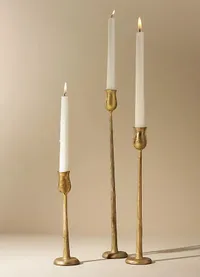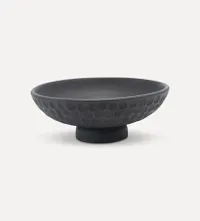I'm trying a 30-day minimalism challenge this January, a step-by-step guide to life of soothing simplicity
Try our 30-day minimalism challenge to declutter your mind and home this January


This January, I'll be trying my hand at the 30-day minimalism decluttering challenge to help my home feel like a tranquil space. After the festive period, my home is always in need of some serious decluttering and this is where minimalism comes in. The discipline encompasses everything from wellbeing to interiors, and while it is a hard practice to define in a nutshell, it is essentially about praising form, function, and material. 'Minimalism is about finding the core,' says Jonas Bjerre-Poulsen, founder of Copenhagen’s Norm Architects, 'It is about a search for essence. By eliminating the superfluous, you emphasize core qualities of life, spaces, people.'
But it's no use taking up a minimalist lifestyle overnight. To really embrace minimalism, we advise breaking it down into achievable daily tasks. 'The key to effective decluttering is to break it into small, manageable chunks,' advises Catharina Björkman, Scandi lifestyle expert at Contura. 'Don’t start with big tasks such as clearing out the loft or garage, instead, set yourself small challenges that can be quickly crossed off. It may only take you 10 minutes, but you will feel a great sense of accomplishment.' There are many minimalist-approved tricks for less clutter, so why not give a minimalist interior design style and lifestyle a go with our 30-day minimalism challenge.

Oonagh is a content editor and interior writer. For this story, she spoke to her minimalist designer contacts to find out how they practice minimalism in their own homes to devise her very own 30-day challenge.
The 30-day minimalism challenge
Day 1. For every new item you got over the festive period, take something to a goodwill store
You most likely inherited an unwanted secret Santa gift or two this festive period that your home could really do without. For day one, take stock of the gifts you received or the items you purchased last month, and assess what you actually need and want in your home and what is useful. Be realistic about your gifts and assess if they add to your home and aesthetic.
The concept of minimalist interior design is about making space and adjusting how to live to accommodate for something new — so, if you want to keep something, in its place, take something you don't use to the goodwill store.
'I do a major clean out from time to time and find it so rewarding to simplify and let go of things that I don’t need,' says minimalist interior designer, Pella Hedeby. 'These are perfect tasks when you need to clear your head and give yourself a fresh start.'
Day 2. Declutter one flat kitchen surface entirely
A quick task that can take mere minutes but give you real satisfaction is decluttering a flat surface in its entirety. The kitchen is the hub of the home and can end up becoming a bit of a dumping ground if you're not careful.
Take 10 minutes or so to remove everything from a kitchen countertops, give it a good clean and build back what you actually need in the space, carefully considering if something adds to the surface and getting rid of anything that isn't aesthetic or functional in the process.
The Livingetc newsletters are your inside source for what’s shaping interiors now - and what’s next. Discover trend forecasts, smart style ideas, and curated shopping inspiration that brings design to life. Subscribe today and stay ahead of the curve.
Day 3. Curate your mantel (or shelf)
A mantelpiece is a great opportunity to curate a beautiful display, and done well, mantel decor can provide touchpoints within your home that comfort and inspire you. Often in the center of the living room, above a fireplace, you want to really consider what you have on your mantelpiece and really query whether any decorative item belongs there.
Try grouping candles, add trailing plants that cascade down, or maybe a decorative sculpture. Try and get the balance right and think carefully about the number of items you want to display. Take an item away really force yourself to question if this is the curated display you want guests to see when they come into the room.
Aurora candlestick from Anthropologie
A beautiful golden candlestick holder that will look sleek and minimalist on your mantelpiece. A touch of warm minimalist decor.
Day 4. Clean out one drawer in your dresser
Your next task is to take one drawer and fully empty it, slowly assembling things back in place to make sure everything is neat and tidy and has its purpose in the drawer.
'Not only does this force you to get a little tidier inside your wardrobes, but it takes you away from screens, helps to clear your mind, carves out more storage you may need for other items lying around the house,' says minimalist designer, Sheena Murphy of Nune. 'And you can feel good about donating what you clear out. I do this a couple of times a year and it's incredibly satisfying!'
Day 5. Curate your coffee table

Coffee table decor is an art in itself, and an easy way to get into in a minimalist frame of mind. Think about having elegantly stacked coffee table books, removing some from the table and demoting to a bookshelf if they don't add anything to the space.
A simple candle or candlestick holder that adds a bit of height can help add to the atmosphere of the space, and maybe a small bud vase that you keep topped up with a flower or plant in water can add a bit of nature to the space. Use the rule of three to group items together. Three is a satisfying number in interior design as it means items don't end up equal and symmetrical and creates a nice and satisfying grouping without being too much.
Day 6. Try out the six month rule
A great way to assess if you need something in your home is to use the six month rule which forces you to think about whether you have used it in the last six months. If the answer is no, then it's time to get rid of it.
'At the core, the six month rule basically states that when you are organizing your space and decluttering, anything you haven’t used in the past six months can probably go,' explain Ben Soreff, a declutterer at House to Home Organizing. 'The rule allows for exceptions including holiday decorations and keepsakes.'
Take one room, and really consider if you've used every item in the last six months.This is a good way to practice decluttering.
Day 7. Streamline your spice rack
A spice rack is a place that can easily get out of control. Empty jars accumulate, spices get mixed up and duplicates emerge.
Set yourself the task of going through each jar, chucking empties and get organized with your labels.
Day 8. Take everything off your coat and hat rack and put it back again
It's time to start thinking about your entryway. This is the first impression when guests come into your home, and it easily becomes cluttered as you enter and leave the home.
Bulky coats end up thrown on the stair rail and coat hooks get swamped. Take everything off your hooks, assess whether it belongs in a hallway or in a closet, and put it back again - you'll be surprised at how much more space you have.
Day 9. Arrange pillows on your bed
You might not have thought much about how you arrange your pillows on your bed, but this can help your space feel all the more relaxed and calming. For a double bed, take your sleeping pillows and stack them two pillows high.
Then consider a decorative pillow in the center. A well-made bed is a delight and can help you feel calm and collected, ready to take on the new year.
Day 10. Spend some time doing plant admin
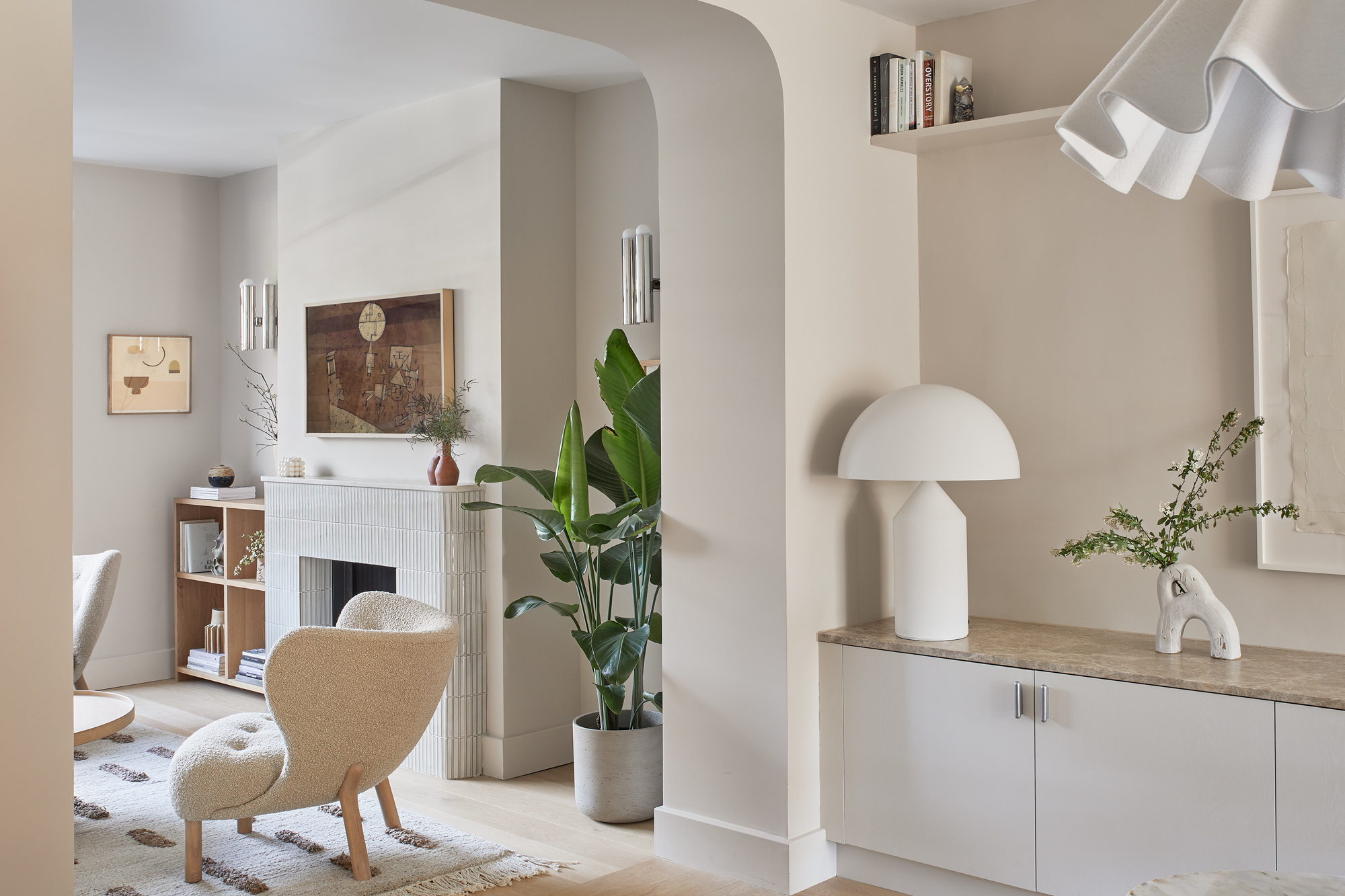
Plant admin is a task that always gets overlooked, but plants and indoor trees are crucial to the minimalist way of life, ushering in a sense of well-being into your home and bringing the outdoors in. As far as minimalist decor goes, plants are always welcome in a minimalist home.
Set some time aside to go through your existing plants. Do they have any dead leaves that need cutting off? Have they been recently watered or misted? If there is no signs of life, be brutal and get rid of them, you'll feel so much better for it.
Day 11. Go through your bedside table and get rid of anything you don't need
A bedside table is another space that can be neatly curated to spark joy, as the well-renowned minimalist designer, Marie Kondo puts it. If you have any drawers, go through them and throw what you don't use or need. It's an area that easily accumulates bits and pieces that are redundant in your newly neat and polished home.
Be ruthless and empty out that drawer, potentially opening the drawer up to space for new items. The surface of your bedside table can act as a calming vignette. A stack of books, your favorite candle, think about the things that wind you down to help you get a good night's sleep to evoke a sense of calm. Think about what you might want access to while in bed, and try to avoid association with your phone.
Day 12. Get rid of one decorative item that you don't really love
Minimalism at its core is not an interior design concept that celebrates decor. In fact, it really questions whether we need or use something or if it brings beauty to a space. But soft minimalism allows for a more tactile approach to decor. Minimalist decor includes beautiful sculptural objects and ceramics. Take one room, like a living room or bedroom and look at how you have decorated the space. Question whether each piece really belongs here and if it adds to your interior design, if not, find it a new home or take it to a goodwill store for someone else to enjoy.
'Whenever I find I have things I don't use anymore I go through them and donate them to a charity,' says Kashi Shikunova of minimalist interior studio, Yam Studios. 'I always feel very good after this exercise as it makes my home feel less cluttered and I love the idea that these items will be used by someone who really needs them.'
Day 13. Reorganize one row in your bookshelf

Your next task is all about book organization. If you have a floor-to-ceiling shelf, it might feel a little unrealistic to expect you to reorganize the whole bookshelf, but by just taking one row, you can glean a little joy from rejigging the books, assessing what you have, and seeing what else has accumulated on the shelf.
Take all your books out and think about how you might want to reorder them. This might be alphabetical, organized in a pleasing rainbow sweep, or even back to front if you want neutral pages instead of a color pop spine - perhaps inkeeping with a neutral minimalist color scheme. Give the shelf a good dust before you place your books back too.
Day 14. Get rid of empty toiletries in the bathroom
You're halfway through - well done you. Next up is a simple task that gets avoided because of pure velleity and involves a bit of bathroom organization. Go through bathroom drawers and cabinets and take out any cosmetics or bathroom necessities that need to get emptied and chucked.
Again apply the six-month decluttering rule - if you don't use it or haven't used it in the last six months, get rid of it.
Day 15. Clear out that 'miscellaneous' drawer
Everyone has a miscellaneous drawer in the house - typically filled with bits and bobs that seem to belong nowhere. Screwdrivers, lid-less pens that may or may not work and old batteries seem to accumulate in the miscellaneous drawer over time.
Now it's time to tackle the drawer head-on and get rid of the things you haven't used in years. In the process, you'll reclaim back a whole new drawer and valuable storage space.
Day 16. Tackle the blanket box
Your blanket box or wherever you keep your blankets and duvets can so easily become a space that's bulging out of the seams. But if you take out all your blankets and fold them one by one, putting them back into the trunk or ottoman, you'll feel all the better for it.
Day 17. Clear your dining table and finish with a centerpiece

Another area that has ample opportunity for an aesthetic moment, that often becomes a bit of a dumping ground in the home. Take a moment to completely empty any clutter off your dining table, moving each item to a considered space, and then taking the time to clean it thoroughly.
If it's wooden, wax it. Then put all items back and assemble a table centerpiece. It doesn't have to be anything ostentatious, a simple bowl of fruit in the center can go far to add a perfect finish to your space.
Zachary footed bowl from Lindye Galloway
Place this bowl in the center of your table when not in use for a touch of refined and elegant minimalist decor.
Day 18. Curate a space on your bedroom dresser
Another spot that becomes a bit of dumping ground is your bedroom dresser, but you can really create a little vignette that is both personal, filled with your favorite things, and practical. Start by removing everything on the dresser and give it a good clean.
Go through everything and see if it needs displaying or if it can be tidied away. Try the 20/20 decluttering rule - which asks if you could replace an item for less than $20 in less than 20 minutes from our current location. Put the items back that you believe deserve a space, and try and organize it properly. Jewelry might want to sit in a little decorative bowl, for example, and you might want to add a candle to set the atmosphere.
Day 19. Do an inventory of your kitchen items and get rid of duplicates
We all accumulate kitchen crockery, utensils, bakeware, and bits and pieces in our kitchens over time and we certainly all have duplicates within our stash. Take 30 minutes and go through your cutlery drawers and get rid of duplicates or bits and pieces that you no longer need.
Day 20. Tidy cables away out of sight
You might not notice your cables and electric wires, but tidying these away can bring a sense of simplicity to any space and help you visually declutter. You might want to invest in ways to make hidden cables a temporary look in your home.
Use adhesive hooks or cable ties to secure wires to your furniture, buy some clips to prevent tripping and guide cords along surfaces with command strips.
Day 21. Empty and reorganize a kitchen cabinet
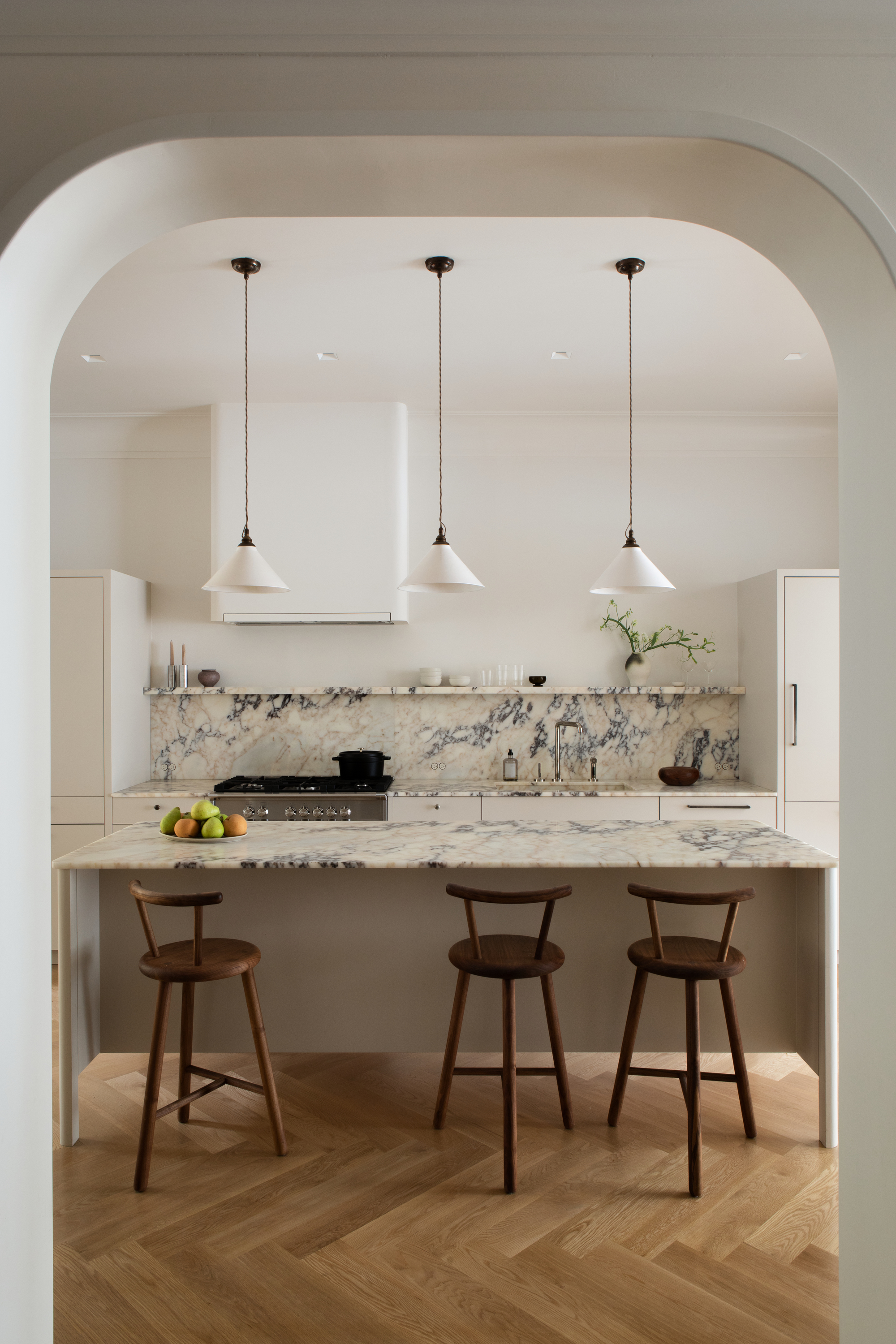
Time to tackle and organize that kitchen cabinet. It's not the most fun of tasks but one that will give you endless satisfaction. Start by emptying a cabinet in its entirety and think about where in the kitchen it is and how that relates to what you might want to put in it. You might find it could better fit a whole new purpose - a high-up cabinet works for things like canned goods, snacks, boxed dry food, and cereals, for example, not going out of date quickly and with unsightly packaging that you might not want on display, while heavier objects work well in a low cabinet.
Don't overstuff, throw or donate unwanted food and use cabinet organizers to maximize the space - a helpful tip for small kitchens. Keep things tidy with drawer dividers, labels, and food storage containers.
The only way to truly organize your kitchen drawers is to take everything out of them first. 'Unfortunately, when it comes to decluttering, everything is going to look a lot worse before it gets any better,' says the New York-state based tidying expert Corrie Jackson of Maison Haven. Lay all your utensils out on the kitchen counter and ask yourself if you still use them, want them or like them. Discard anything that doesn't come up to this standard.
'Instead of having big utensil jars or spice racks sitting out on your worktops, I highly recommend investing in drawer organizers so you can neatly pack these things away in a concealed drawer and have clearer worktops / surfaces ready for use,' says Sheena. 'That way, when it comes to cooking or entertaining, or even using your kitchen for some other purpose, there's less work to do to prepare the area, and you're keeping clutter to a minimum.'
Day 22. Decant five containers of dried food into kilner jars
Our kitchens are more often than not in need of some serious decluttering after the festive season. Locate your dried food and decant them into kilner jars. This will keep things cohesive and seamless in the kitchen, creating a space that is uniform and aesthetically satisfying.
Kilner round clip top jar from Amazon
Ideal for preserving dried foods, these Kiln jars can help keep your kitchen looking sleek and organized.
Day 23. Reduce your container stash by 50 percent
'Minimalist living is not only about having a clean home, it is also about celebrating nature and authenticity,' say Hélène Pinaud and Julien Schwartzmann of Heju Studio. 'Focus on raw materials like wood, stone, and concrete,' and try and get rid of plastic in the home. One big source of plastic is often our plastic container collection. Go through and pair the lids, being ruthless and getting rid of any that have lost their lid. Try and get rid of old containers and only keep your favorites.
Day 24. Cracked crockery - mend it or trash it
We often keep cracked crockery long after the damage has been done, and are guilty of storing it away waiting for the day when we might finally feel inspired to do something about it. Well today is that day, get that broken gluggle fish jug or china saucer and invest in glue to piece it back together. Embrace the imperfection with Kintsugi, the Japanese art of repairing broken pottery by mending the break with lacquer dusted or mixed with powdered gold. Alternatively, get rid of that cracked crockery.
Day 25. Make sure lighting is creating the right atmosphere
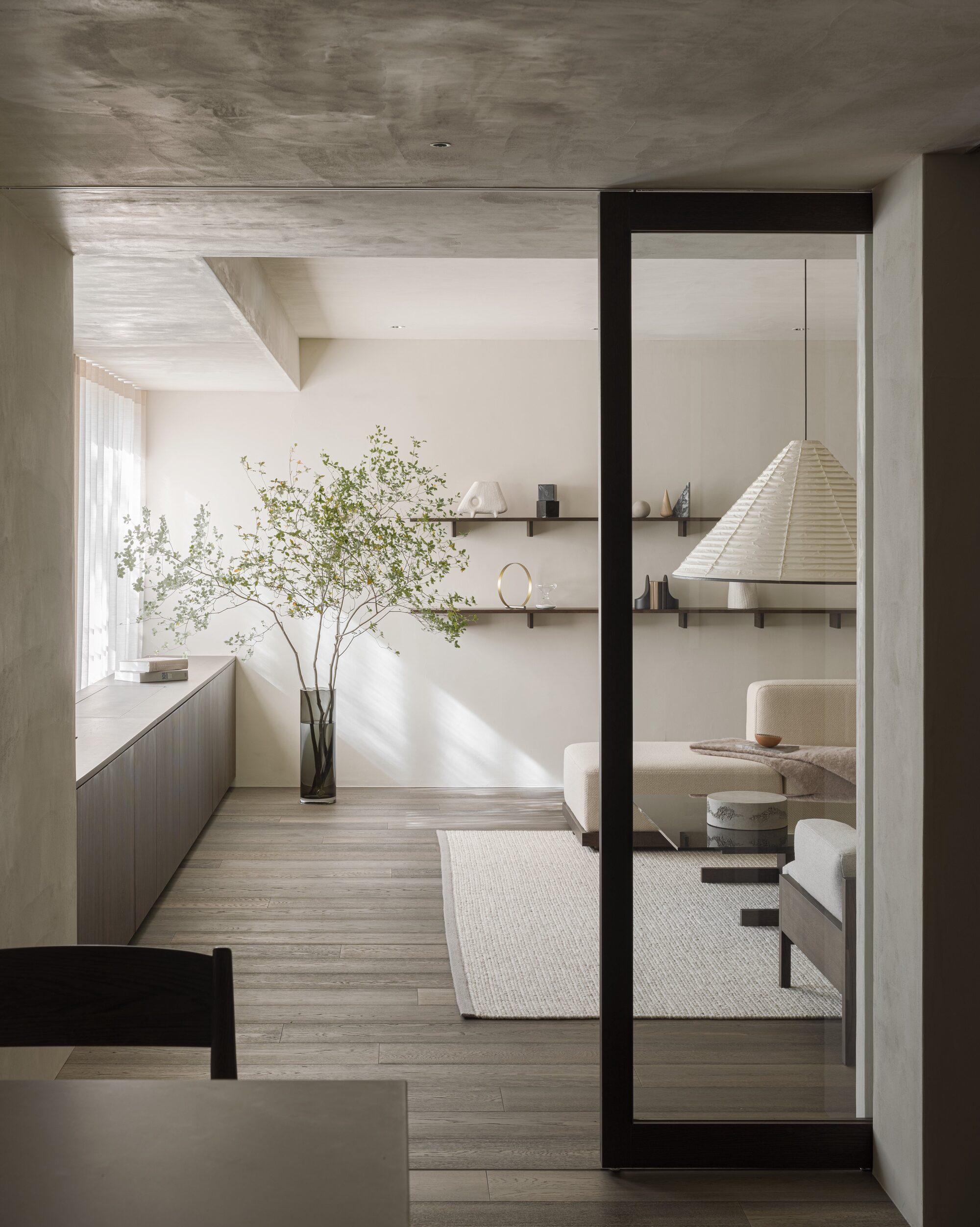
You're nearing the part of the challenge where you will have done some serious decluttering, but minimalism in a home is also about the atmosphere. 'As an architect, I’m interested in the emotional quality of a space,' says renowned minimalist John Pawson.
'When someone walks into a house, or a gallery or a monastery I have designed, it is the atmosphere I want them to experience, before they start registering the details of the architecture.' Think about atmosphere in terms of lighting and focus on the way you light your home for the day. Check all the bulbs in your home and see if they need changing. Sort out living room lighting, fix one recessed bulb that has been out for months or the LED strip that sits under a kitchen cabinet.
Think about the lighting warmth too. Warm light can help bring real atmosphere to the room. All light sources have a Correlated Color Temperature and it is measured in Kelvins (k). The lower the figure the warmer it is. Go for around 3000k for a warm feel.
Day 26. Get rid of any finished candles
Even the most organized and minimalist of spaces are guilty of this one, so for this task, take note of all the candles in your home and consider if you will be able to get another burn out of the candle or not. If one is about to burn out, light it and enjoy it burn to the end, then recycle the candle jar or glass.
We so often squirrel these away, convincing ourselves we'll one day become a home candle guru and get round to making our own candles, but be realistic - if you're not going to use it, get rid of it by recycling responsibly.
Day 27. Curate your work-from-home space
A tidy house helps a tidy mind, and nowhere is this more important then when you're at work. Clutter on your home office desk can really detract from the job at hand, so it's time to tackle the space.
Get rid of anything that doesn't help you do your job, chuck old scribbles or notes, and have a fresh pad of paper with pens to hand. You might also want a candle on your desk to keep the space feeling calm.
Day 28. Sort out under the sink
OK, it’s time to get the washing up gloves out! That ever-expanding collection of cleaning material under the kitchen sink needs culling. (Do you really need three different types of window cleaner?)
Take everything out and categorize them, keep one of each, clean the whole area, and replace in a logical way with the most frequently used at the front. Clean the inside and outside of the door. For items that can be hung up, put in a couple of cup-hooks on the inside of the door to free up cupboard space.
Day 29. Upcycle one small furniture item
Pick a small item like a bedside table or a mini set of drawers. All you need is sandpaper, a paint brush and a tin or two of tester paint. Empty it, remove any handles or knobs, clean it, sand it down and repaint it in a colour that acts either as a contrast or is attuned to the rest of the room.
Use it as an opportunity to only put back what you need, discarding any accumulated detritus. Put back in position and step back to admire - very little work and instant impact!
Day 30. Be ruthless with piled-up personal mementos
A real problem with decluttering is when it comes to separating the clutter from something that is personal. From photos to saved menus from a great dinner, it's easy to get over-sentimental about certain items, but minimalists demand you are ruthless when it comes to keepsakes.
Go through all your bits and bobs that you've kept over the year and give them a home in a box that can live under the bed. This will help you get rid of those bits and pieces you really don't need.
Siân Pelleschi's advice is to just move on quickly – 'It’s about making quick decisions, not rash ones. Is it a keep, donate, give away, or bin. If you’re unsure as soon as you pick it up, put it down, move on and come back to it later. Decluttering quite often is hindered when a person picks up an item and is unsure what to do about it. It leads to hesitation, questioning, and a feeling of unease that can halt the whole process. It’s ok if you’re not sure but don’t dwell on it, just come back to it at a later date.'

Former content editor at Livingetc.com, Oonagh is an expert at spotting the interior trends that are making waves in the design world. She has written a mix of everything from home tours to news, long-form features to design idea pieces, as well as having frequently been featured in the monthly print magazine. She is the go-to for design advice in the home. Previously, she worked on a London property title, producing long-read interiors features, style pages and conducting interviews with a range of famous faces from the UK interiors scene, from Kit Kemp to Robert Kime. In doing so, she has developed a keen interest in London's historical architecture and the city's distinct tastemakers paving the way in the world of interiors.
